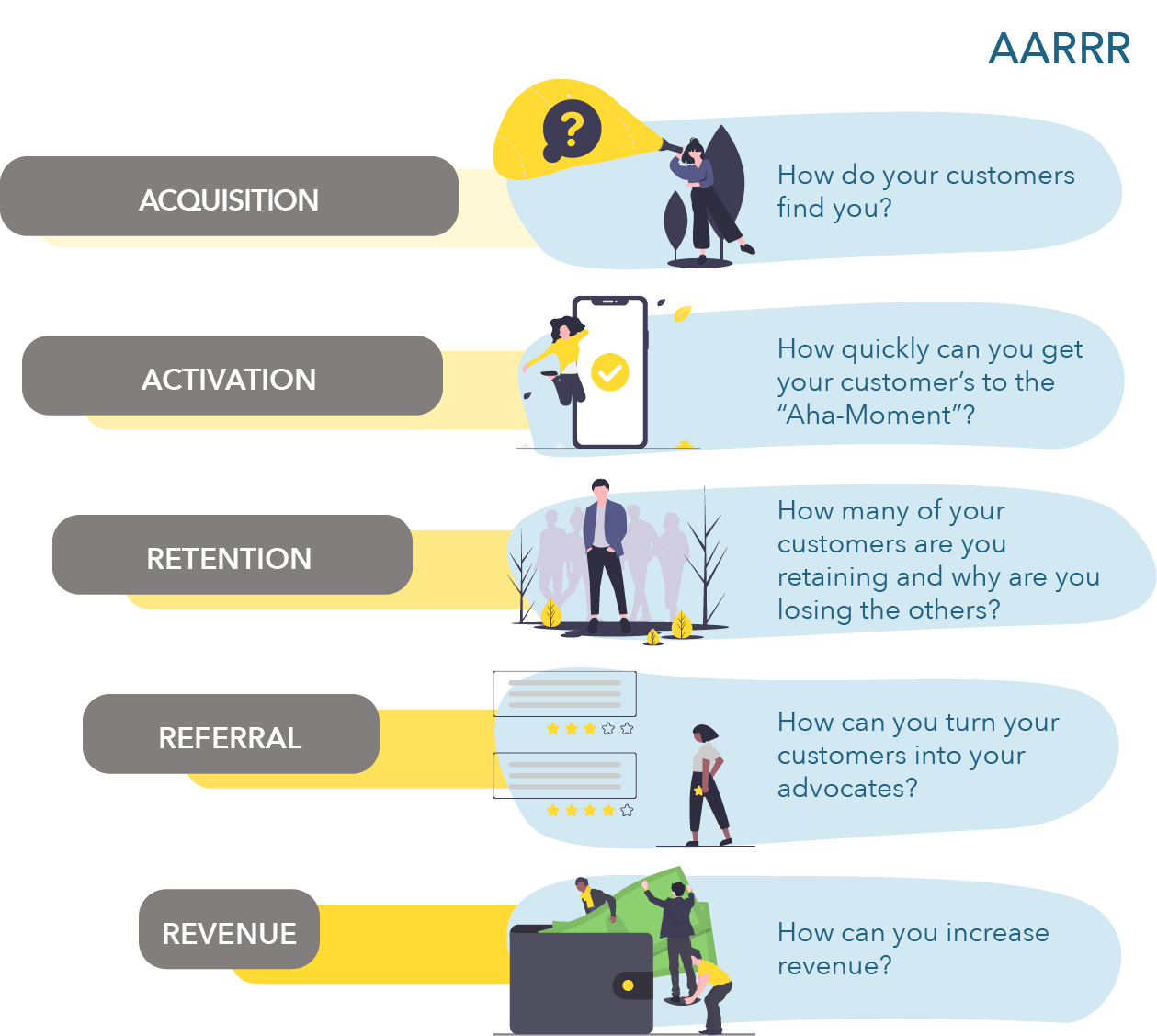RACE Framework
Chaffey’s RACE framework is a conversion-based framework. Conversion marketing is a strategic approach that explicitly aims at increasing customers. The framework we will study here is part of a greater set of strategic approaches, such as HubSpot’s original “attract-convert-close-delight” strategy, which became their “flywheel business model,” or the grandfather of conversion marketing approaches, the “pirate metrics” AARRR model (acquisition-activation-retention-referral-revenue) shown in Figure 4.3 (text version can be found here).
Figure 4.3 AARRR

These different frameworks propose stages with different names, but the central idea of this strategic approach is the same. To convert, you need to move people through four stages:
- visitor (people come to your website)
- lead (visitors are converted into a qualified potential customer i.e., somebody who is interested in your product and is also somebody you are interested in selling to)
- customer
- repeat customer
Your goals at each stage are as follows:
- Visitors: In brief, you create campaigns to attract people to your website.
- Leads: Once they are on your website, you want to (1) find ways to see if they are interested in you, (2) find out if you are interested in them, i.e., whether they can be a customer of yours (because not all visitors are people who can buy your product or service), and, if they fit these two categories, and there is a mutual interest, (3) find a way to continue the conversation with them (usually by collecting their email address or making sure they follow you on social media).
- Customers: Once you have identified a mutual interest, you move to accompany people on their journey so that you can convert them from a lead to a customer of yours.
- Repeat customers: After their purchase, you capitalize on their (hopefully) positive experience with your company so that they can co-create on your behalf (e.g., write reviews) and continue their journey as a customer of yours.
The RACE framework presents four stages that help us plan for and coordinate different marketing activities to achieve these objectives.
R stands for REACH
During the Reach stage, your company has two objectives:
- to build awareness about your brand, products, and services through offline and online media activities, and
- to drive traffic using inbound and outbound marketing activities and paid earned and owned media touchpoints.
At this stage, you will mostly concentrate on addressing people’s problems.
A stands for interACT
During the Act stage, your company has two objectives:
- to generate positive interactions on your owned media and
- to create leads, i.e., identify potential customers and make sure they can be your customer (we will call these “qualifying” leads later on in the semester).
At this stage, we are going to emphasize how we should focus on addressing consumers’ problems as well as helping them evaluate their options.
C stands for CONVERT
During the Convert stage, your company has one objective: converting leads into sales.
At this stage, we are going to emphasize how we should focus on talking about why your brand, product, or service is the best option for consumers. We will also touch on how to optimize our owned media order to maximize conversions, a process that is called “conversion rate optimization.”
E stands for ENGAGE
During the Engage stage, your company has two objectives:
- to build customer advocacy and
- to foster repeat visits and sales.
At this stage, the idea is to build long-term engagement by continuously contributing to consumers’ lives by creating value. We also want to identify engaged customers in order to foster their participation and engage them in co-creation activities to participate in our campaigns and support our marketing efforts.
Figure 4.4 presents how these objectives evolve over time with each of the stages (text description here).
Figure 4.4 Race Goals


No Comments